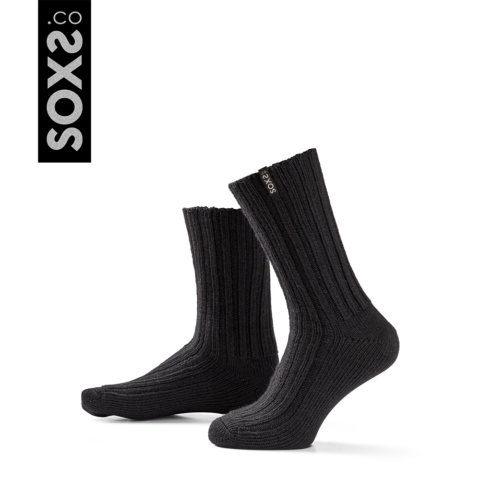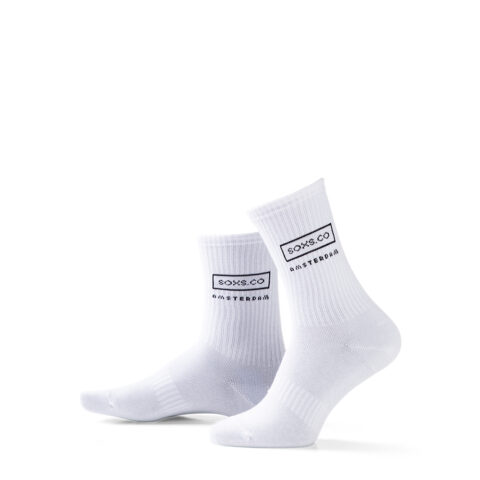Soft warm premium wool socks
Gift ready, stylishly packaged
Orders placed before 1:00 PM will be shipped today (on weekdays) PLEASE NOTE: The delivery time of Pimp My Soxs is 5 working days!
 Wool Socks vs Cotton Socks: Understanding the Difference
Wool Socks vs Cotton Socks: Understanding the DifferenceChoosing between wool and cotton socks affects both your comfort and how well your socks perform. Wool socks provide excellent warmth, manage moisture effectively, and last longer, while cotton socks are typically more affordable and simpler to maintain. Your daily activities and personal preferences play an important role in determining which material works best for you. Wool offers particular benefits that make it worth considering for your everyday sock needs.
Wool socks offer several practical benefits that set them apart from cotton options. The natural insulation properties of wool keep your feet warm in cold conditions, making them ideal for winter walks and outdoor activities. Wool fibers create a warm layer that protects against the cold without overheating.
Unlike cotton, which tends to hold moisture, wool naturally wicks moisture away from your skin. This keeps your feet dry and comfortable throughout the day. Wool socks also stand the test of time, maintaining their quality through regular wear. While cotton socks may need frequent replacement, wool socks remain reliable for much longer, offering better value despite their higher initial cost.
Wool provides a distinct comfort advantage thanks to its natural elasticity. These fibers give wool socks a comfortable fit that maintains its shape over time. Our wool, sourced from New Zealand sheep, offers a particularly soft feel against your skin.
Cotton lacks the natural stretch of wool, which can sometimes result in a less adaptable fit. The breathable nature of wool makes it suitable for various activities from yoga to daily wear. Your feet stay fresh and comfortable in wool socks even during active days, providing a level of consistent comfort that cotton typically cannot match.
Wool adapts remarkably well to changing weather conditions. Its natural insulating qualities make it perfect for cold weather, keeping your feet warm without causing them to overheat. This makes wool socks an excellent choice for winter or outdoor activities in colder climates.
What surprises many people is how well wool performs in warmer weather too. The moisture-wicking properties help regulate temperature by keeping your feet dry. Cotton, while breathable, doesn’t manage moisture as effectively and can become uncomfortable when conditions are hot or humid. This versatility makes wool socks suitable for year-round wear, regardless of the season.
Wool socks typically cost more than cotton options, reflecting the quality of materials and their durability. The premium price comes with premium benefits – from effective insulation to moisture management – that enhance your comfort.
While cotton socks might seem more economical at first, they generally need replacement more frequently. Investing in wool socks means enjoying longer-lasting comfort and performance. When you consider how long wool socks maintain their quality, they often represent better value over time despite the higher initial investment.
Wool socks offer environmental advantages worth considering. Wool is a renewable resource that grows naturally on sheep. At SOXS, we use sustainably sourced wool from New Zealand, supporting environmentally responsible practices. The production of wool typically requires fewer resources than cotton production.
Cotton farming often demands significant water usage and may involve pesticides that impact the environment. By choosing wool socks, you support a more sustainable option that aligns with environmentally conscious values. This makes wool a responsible choice for those concerned about their environmental footprint.
Maintaining wool socks is simpler than many people expect. Wash them by hand or use a gentle wool cycle in your washing machine. Avoid high temperatures and don’t use the dryer, as this helps prevent shrinkage. The natural elasticity of wool helps your socks maintain their shape with proper care.
Cotton socks require less specific care but still benefit from avoiding high temperatures during washing. While wool socks need slightly more attention during washing, the extra care pays off through extended durability and consistent comfort. Following these straightforward care instructions helps your wool socks last longer and perform better.
Curious about which wool socks might suit your lifestyle? Explore our full collection at soxs.co to find your perfect pair.

Calf height

Calf height

Calf height